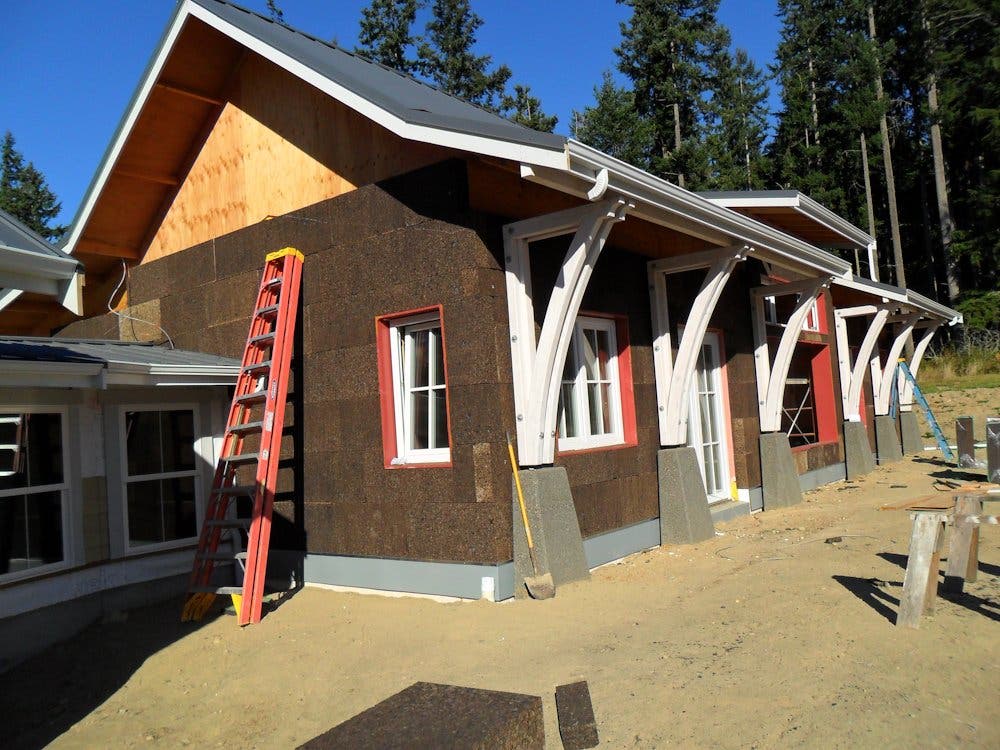Insulation: The Cork That Doesn’t Go Into Wine Bottles
Cork Is A Wonderful Material
Cork has uses ranging from place mats to flooring and has been harvested sustainably since Roman times. Because cork bark can be harvested every 9 years from long-lived cork oak trees, Europe has cork forests which support wildlife species found nowhere else.

Insulation is increasingly important to reducing energy demand. After punching out corks for wine stoppers, the leftover cork can be ground, placed into molds, and injected with steam to form blocks of insulation. Cork binds to itself, so no additional binding agents are required. Most of the processing energy is obtained by firing a boiler using cork dust, so the embodied energy — the energy required to produce cork insulation — is very low.
Cork, being tree bark, is largely carbon. Cork is fire- and insect-resistant and lasts a long time. Cork used in the 1570s to insulate a convent can still be viewed today. Cork is unsurpassed at sequestering carbon.
My Cork-Insulated Home

My house walls include 7 inches of ThermaCork insulation. Having low energy demand means that when I get the first non-zero electric bill, I write a $100 check to the power company that covers my total power bill for the year, which includes heating, lights, EV charging — all of my energy usage.

An energy-efficient house means fewer solar panels are needed to get to net-zero energy. I was fortunate to be able to build to the Passive House energy performance standard, which in addition to insulation pays attention to air sealing, heat recovery ventilation, and designing out energy leakage.
The Passive House model assures that one does not under- or over-insulate, but any kind of insulation can be used: straw bale, conventional, rammed earth, sheep wool, even cork!
It is also useful to go beyond energy efficiency to carbon efficiency, by using sustainable materials which both sequester carbon and have low embodied/fabrication energy.

There are many aspects of insulation and many options. If you have the need and get the chance, I certainly recommend investigating cork.
By Ken Dickey. A tip of the hat and thank you to Ken, a CleanTechnica reader
Have a tip for CleanTechnica? Want to advertise? Want to suggest a guest for our CleanTech Talk podcast? Contact us here.
Latest CleanTechnica.TV Video

CleanTechnica uses affiliate links. See our policy here.

